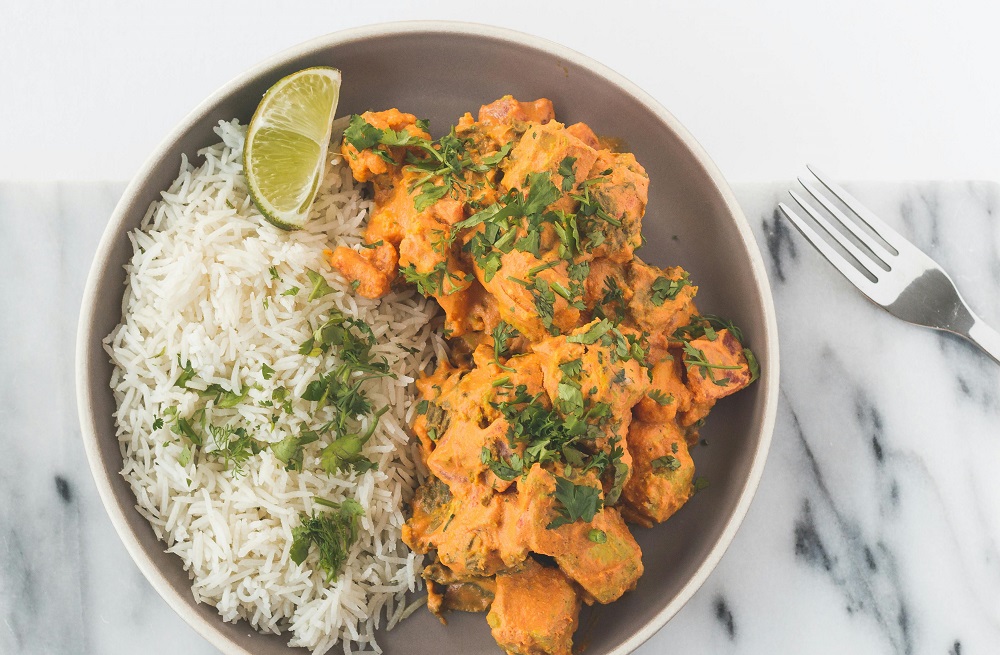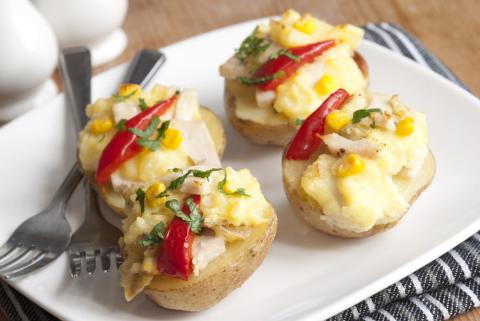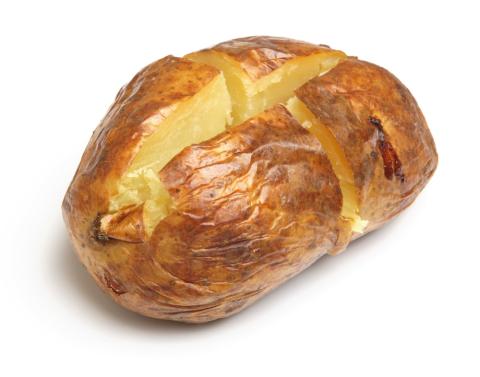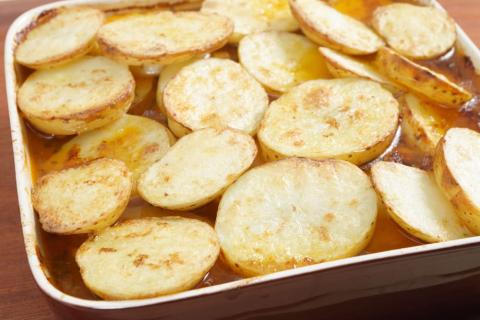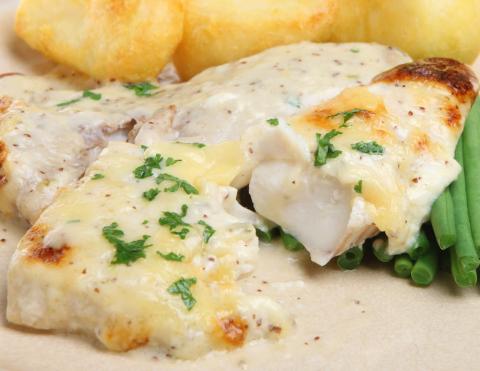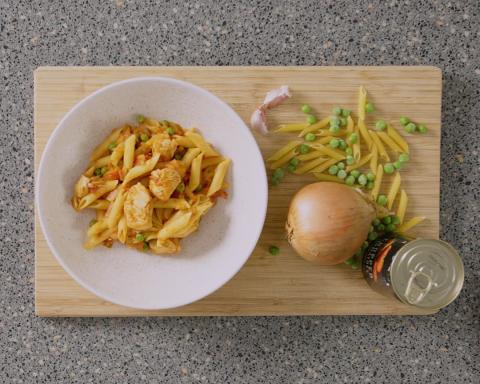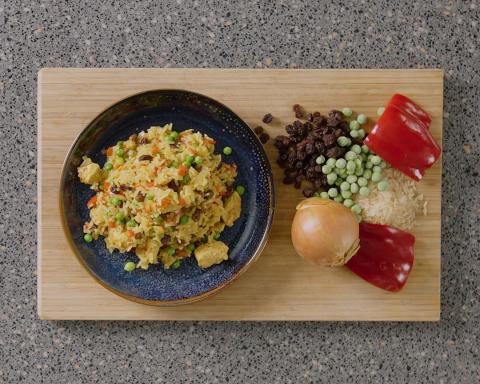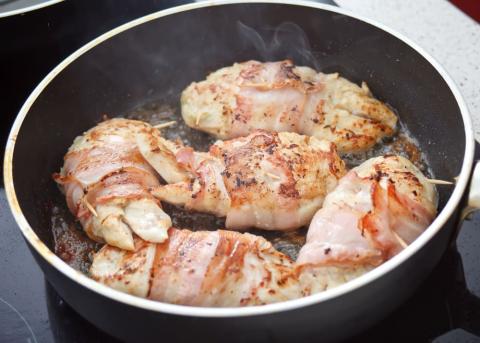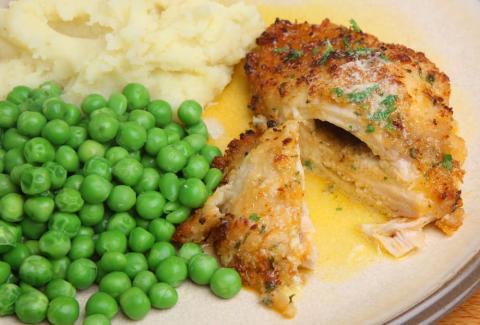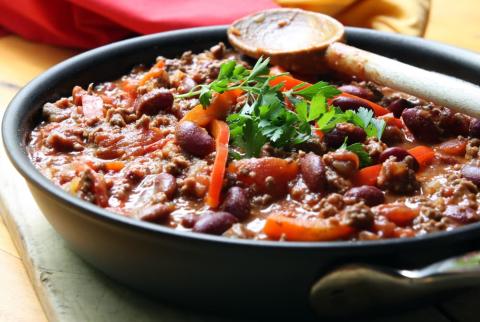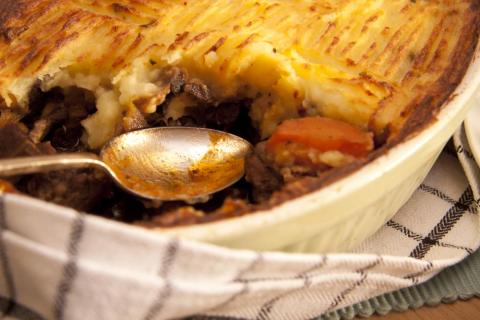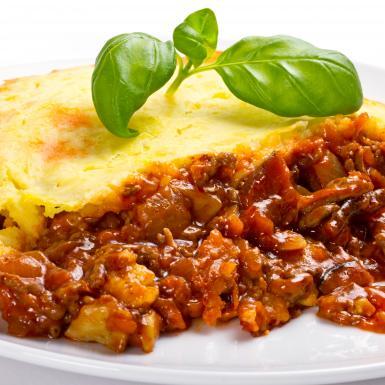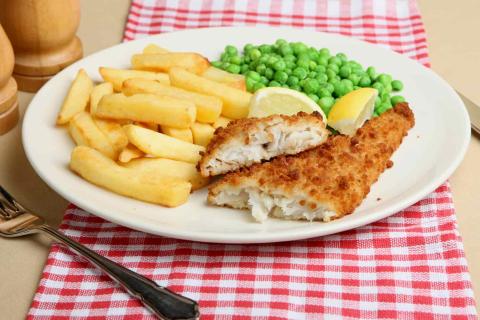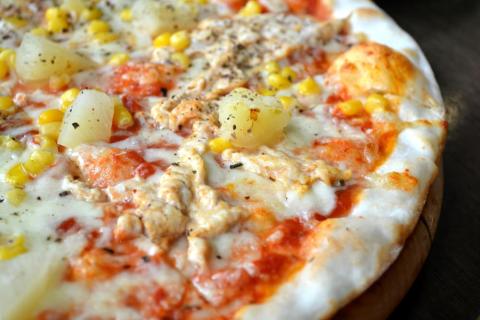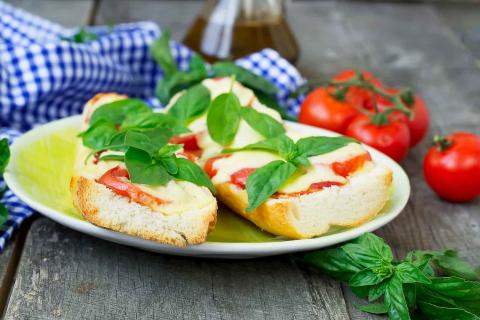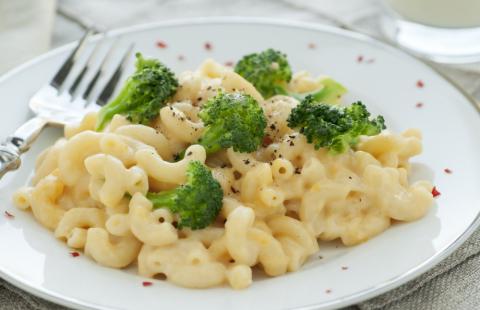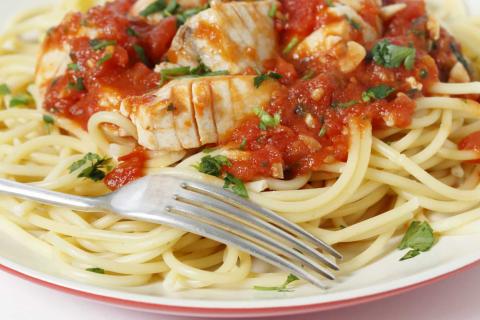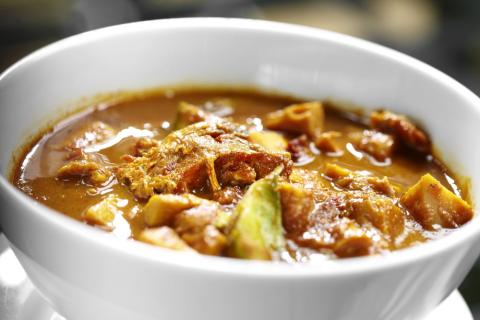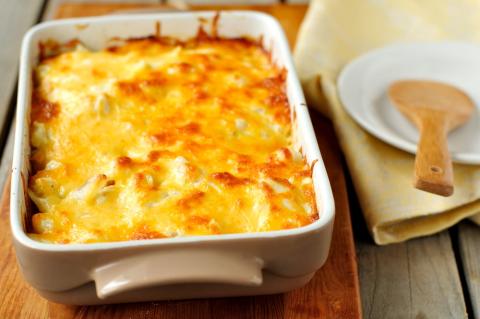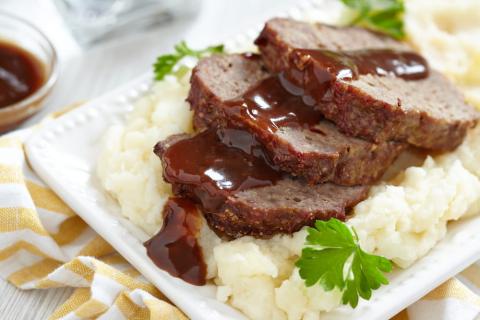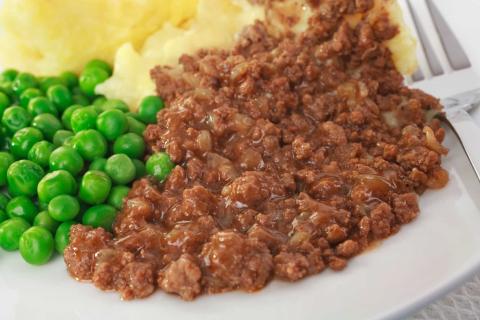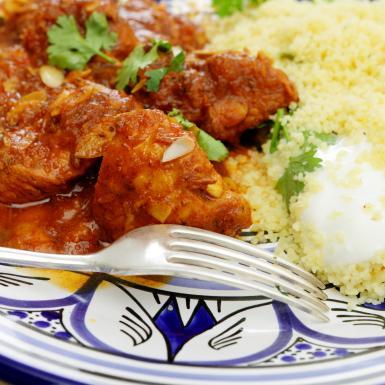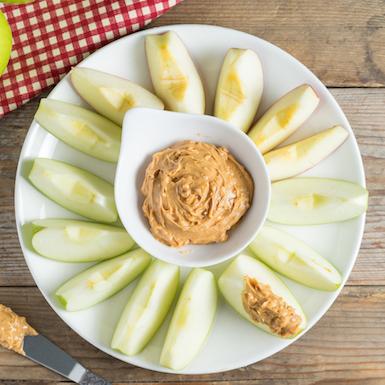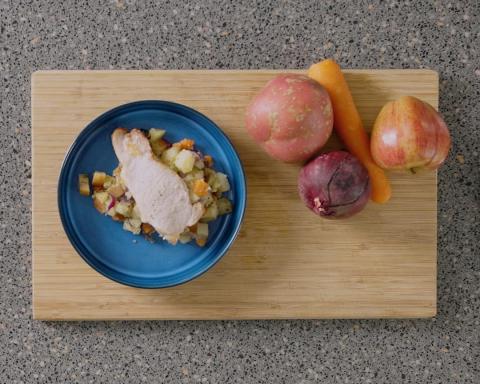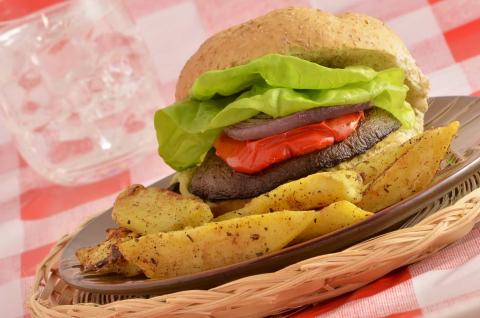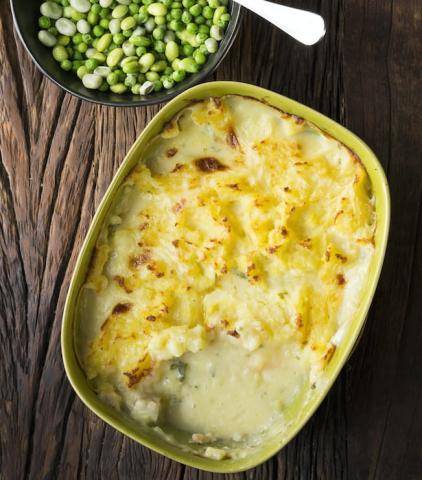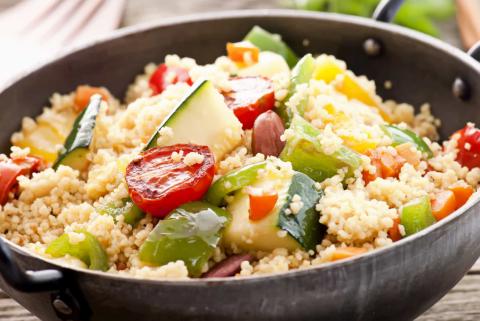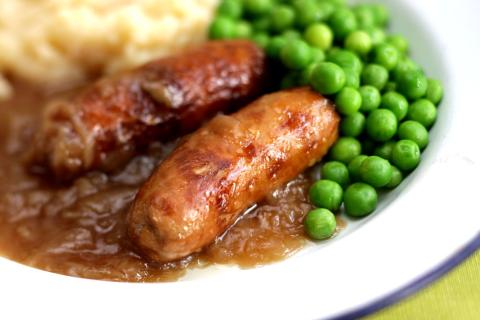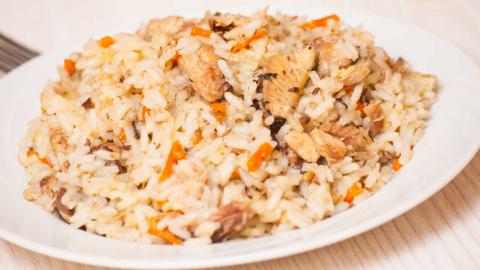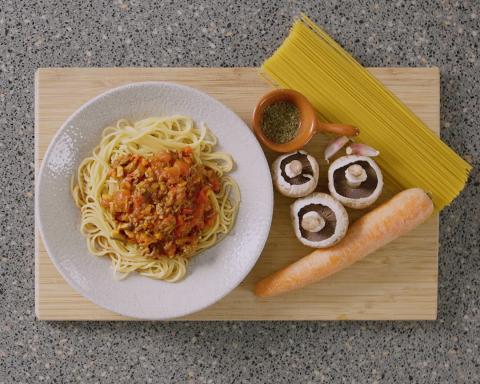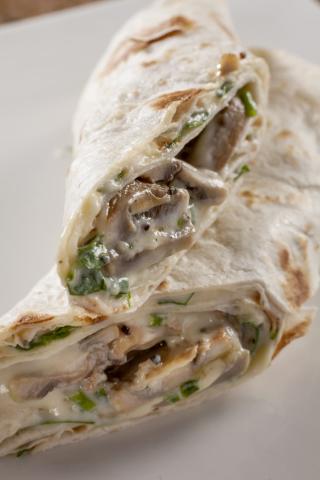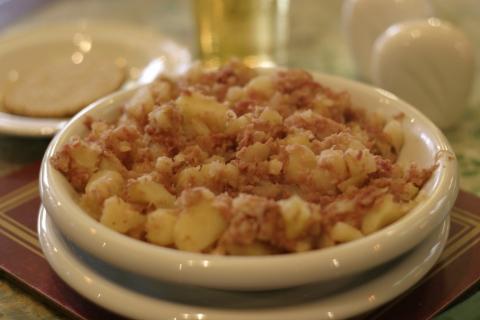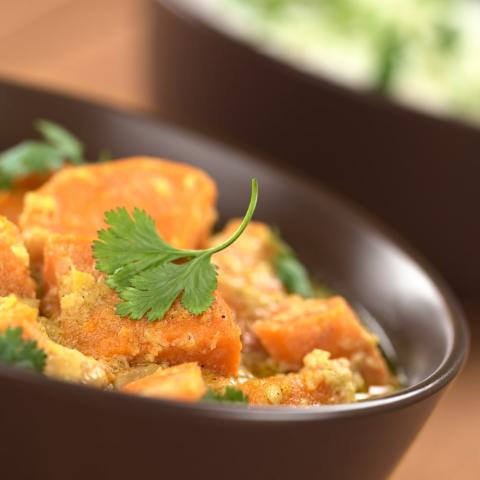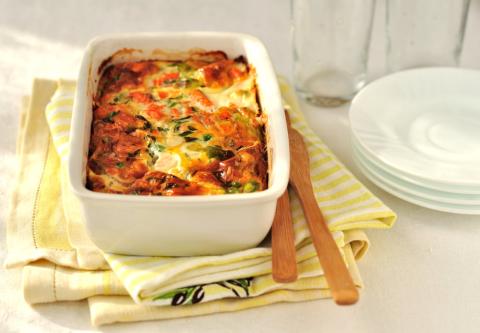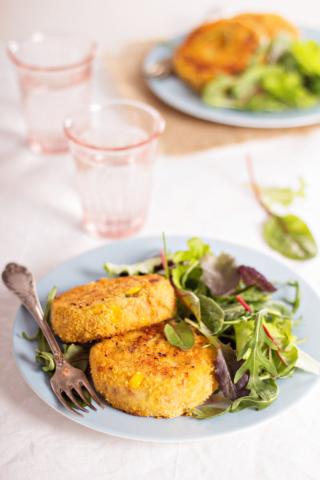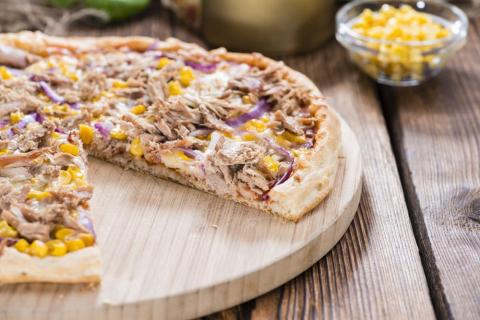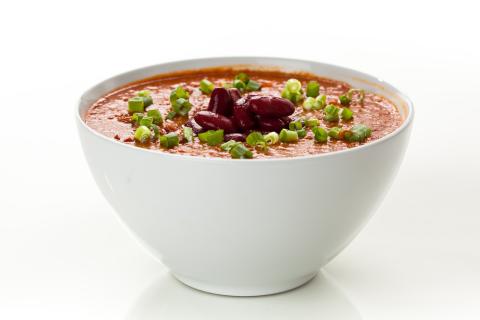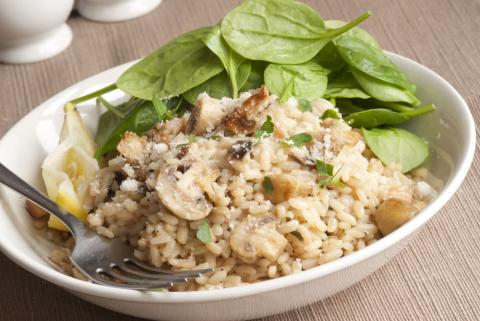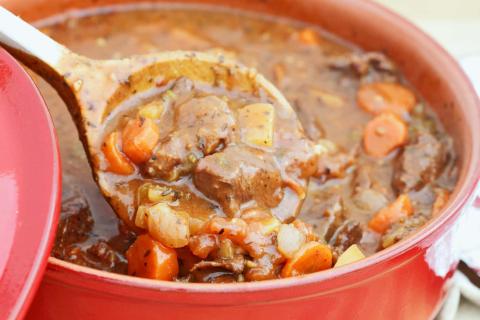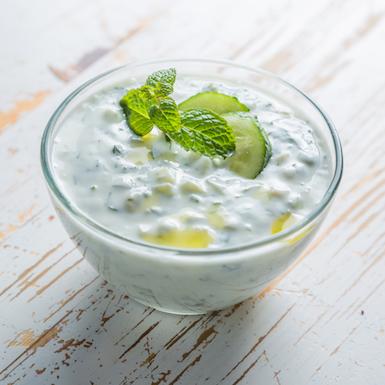- 2 Tablespoons (20g) Vegetable Oil
- 2 Medium (300g) Onions
- 2 (6g) Garlic Cloves or 2 Teaspoons Garlic Puree
- ½ Teaspoons (2g) Ground Ginger
- 2 Teaspoons (6g) Garam Masala (or any medium curry powder)
- 1 Teaspoons (3g) Chilli Flakes
- 1 (160g) Red Pepper
- 1 Large Sized (150g) Chicken Fillet
- 1 Tin (400g) Chopped or Plum Tomatoes
- 1 Tin (390g) Green Lentils
- (200ml) Cold Water
- 1 Mug (300g) Easy Cook Rice
- 1 Small bunch (10g) Fresh Coriander (optional)
Ingredients
Allergy Disclaimer
Always check the label of each ingredient for allergy warnings.
Method
- Peel and finely chop the onion, peel and crush the garlic, and de-seed and chop the red pepper.
- Cut the chicken into small pieces.
- Heat the oil in a large saucepan. Fry the onions until they're soft.
- Add the garlic, ginger, spices and red pepper. Cook slowly for 5 minutes.
- Drain and rinse the green lentils and add to the saucepan with the chicken, chopped tomatoes and cold water. If using plum tomatoes, chop them up using a spoon when in the pan.
- Cook on a low heat for about 30 minutes until the chicken is tender.
- Cook the rice as per the instructions on the packet.
- Chop the coriander (optional), add to the curry, and serve the curry with rice.
Time Saver Tips
You could use a low-salt, vegetable or tomato-based cook-in sauce instead of the garlic, dried ginger, garam masala, chilli flakes, chopped tomatoes and water. The spices could also be replaced with 3 or 4 teaspoons of curry powder.
Cost Saver Tips
This recipe is a good way to use up leftover chicken. Or you could try replacing the chicken with leftover vegetables or more pulses for a vegetarian option. You can also use ground coriander instead of fresh coriander.
Nutritional Information
Based on a single serving of 476g (% of an adult's reference intake)
Energy
463 kcals ( 23 %)
1,883 kJ ( 23 %)
Fat
0.7 g ( 4 %)
Saturates
83.5 g ( %)
Sugar
10.3 g ( 11 %)
Salt
0.2 g ( 3 %)
Detailed nutritional information
| Per 100g | Per 476g serving | |
|---|---|---|
| Energy Kcals | 97 | 463 |
| Energy Kj | 396 | 1,883 |
| Protein | 4.5 g | 21.6 g |
| Total Fat | g | g |
| Saturated Fat | 0.1 g | 0.7 g |
| Carbohydrates | 17.5 g | 83.5 g |
| Total Sugars | 2.2 g | 10.3 g |
| NSP Fibre | 1.7 g | 8.2 g |
| Sodium | 16 mg | 74 mg |
| Salt | 0 g | 0.2 g |
Find out about nutritional labelling
Nutrition labels on the front of packaging
- Most of the big supermarkets and many food manufacturers display nutritional information on the front of pre-packed food.
- Front of pack nutrition labels provide information on the number of grams of fat, saturated fat, sugars and salt and the amount of energy (in kJ and kcal) in a serving or portion of a recipe.
- The labels also include information about reference intakes (expressed as a percentage) which are guidelines about the approximate amount of particular nutrients and energy required for a healthy diet.
- The colour coding tells you at a glance if the food has high (red), medium (amber) or low (green) amounts of fat, saturated fat, sugars and salt.
- The more greens on the label, the healthier the choice
- Amber means neither high nor low, so you can eat foods with all or mostly ambers on the label most of the time.
- Reds on the label means the food is high in that nutrient and these are the foods we should cut down on. Try to eat these foods less often and in small amounts.
Food shopping tips
If you’re trying to decide which product to choose, check to see if there's a nutrition label on the front of the pack. This will help you to quickly assess how your choices stack up. You will often find a mixture of red, amber and green colour coding for the nutrients. So when you're choosing between similar products, try to go for more greens and ambers and fewer reds if you want to make a healthier choice.
 Activities & Play
Activities & Play Behaviour
Behaviour Childcare
Childcare Development & Growing Up
Development & Growing Up Family, Friends & Relationships
Family, Friends & Relationships Feeding Your Baby
Feeding Your Baby Food & Eating
Food & Eating Health & Safety
Health & Safety Mental Health & Wellbeing
Mental Health & Wellbeing Money & Work
Money & Work Online Behaviour & Safety
Online Behaviour & Safety Pregnancy & First Days
Pregnancy & First Days School & Education
School & Education Sleep
Sleep

